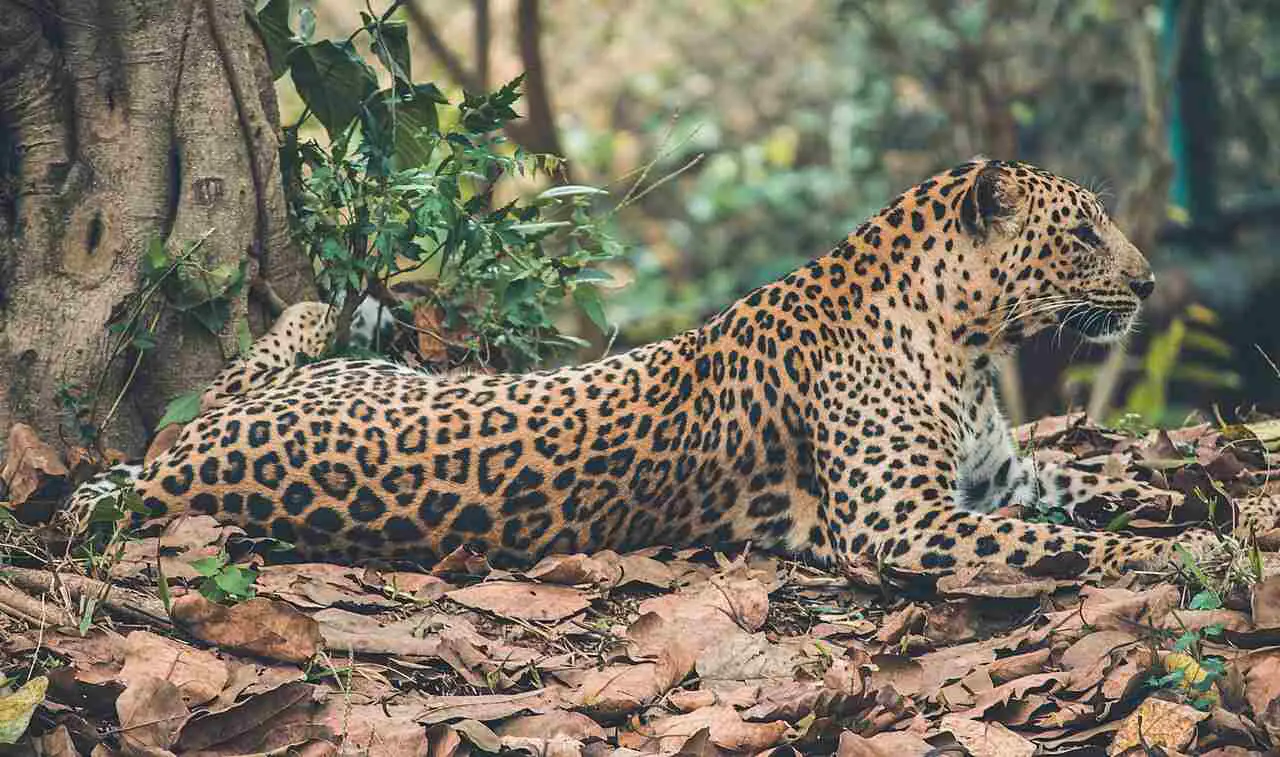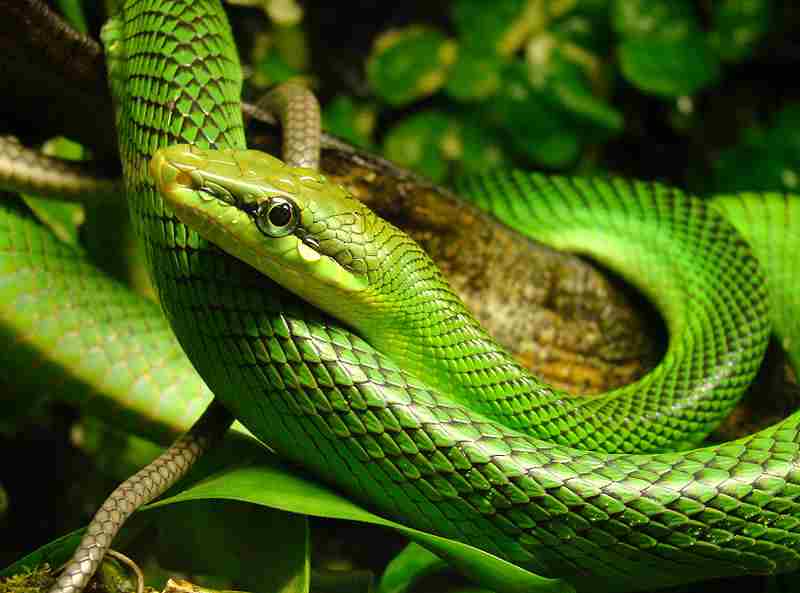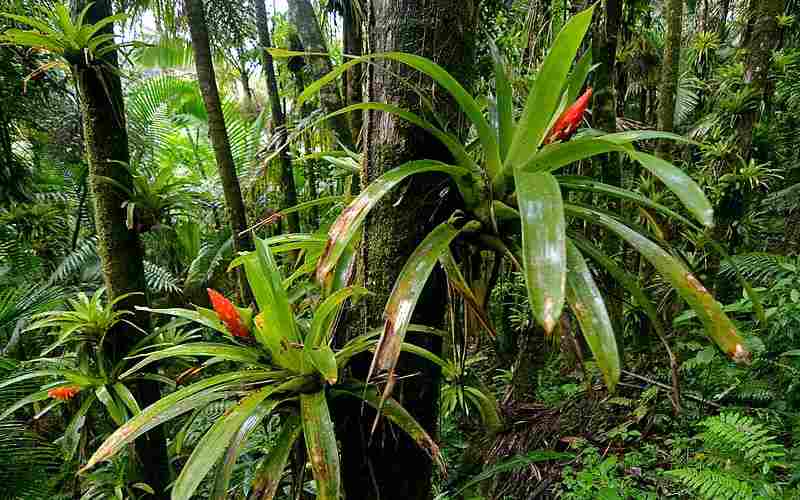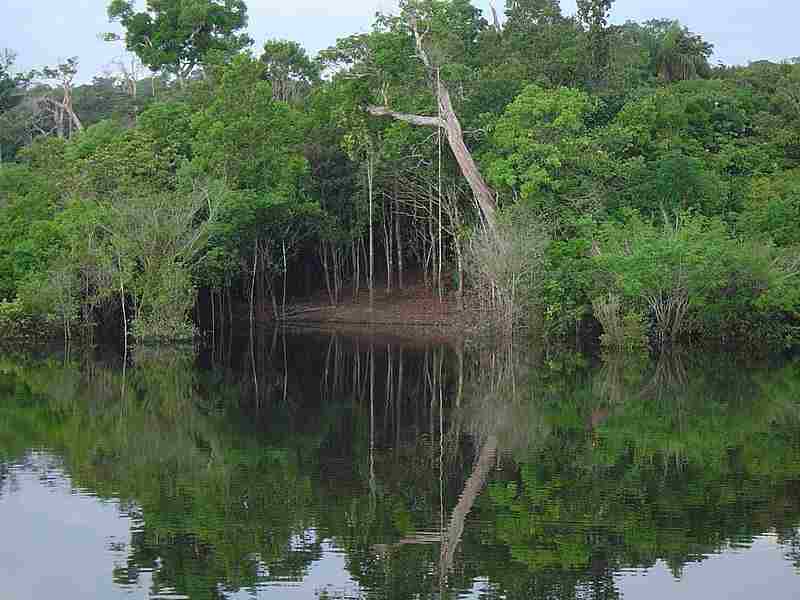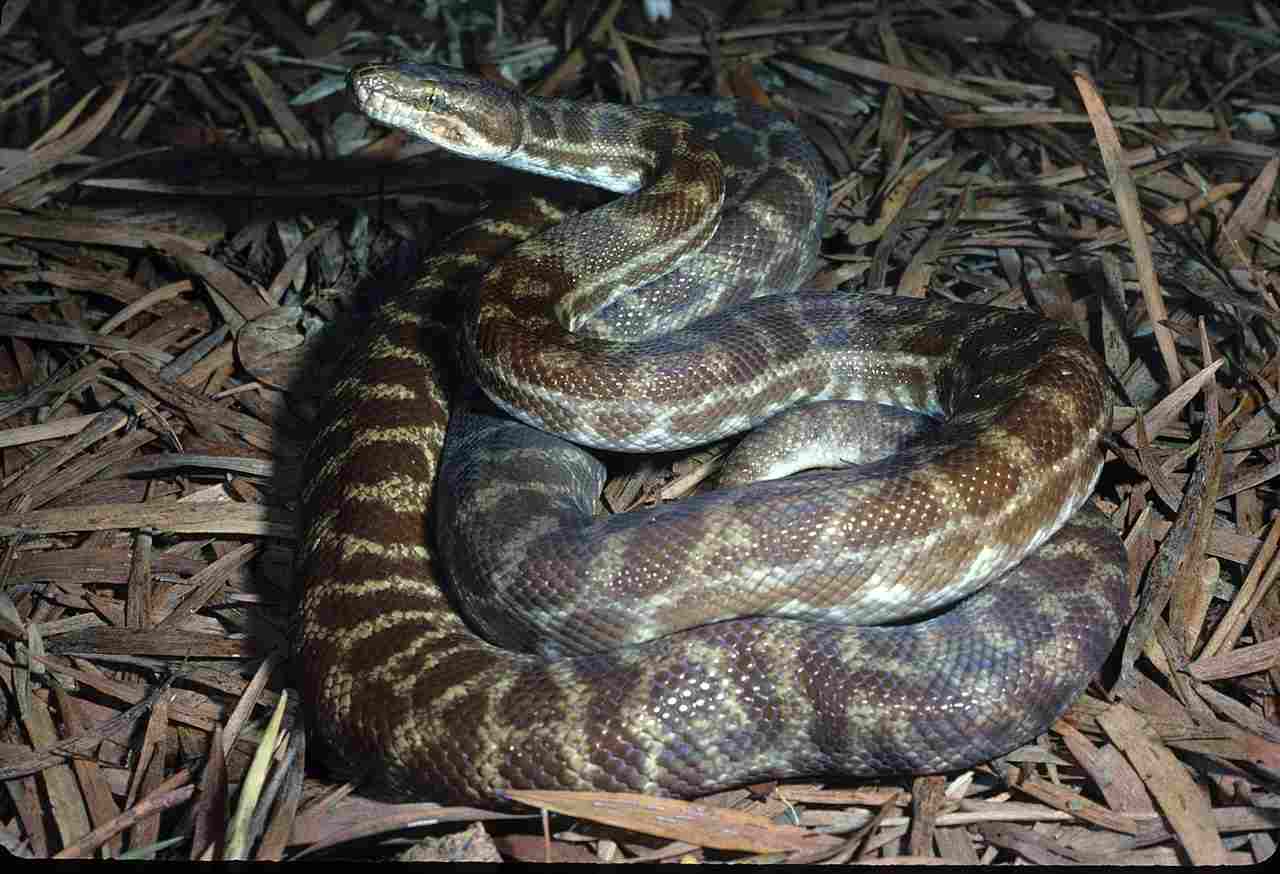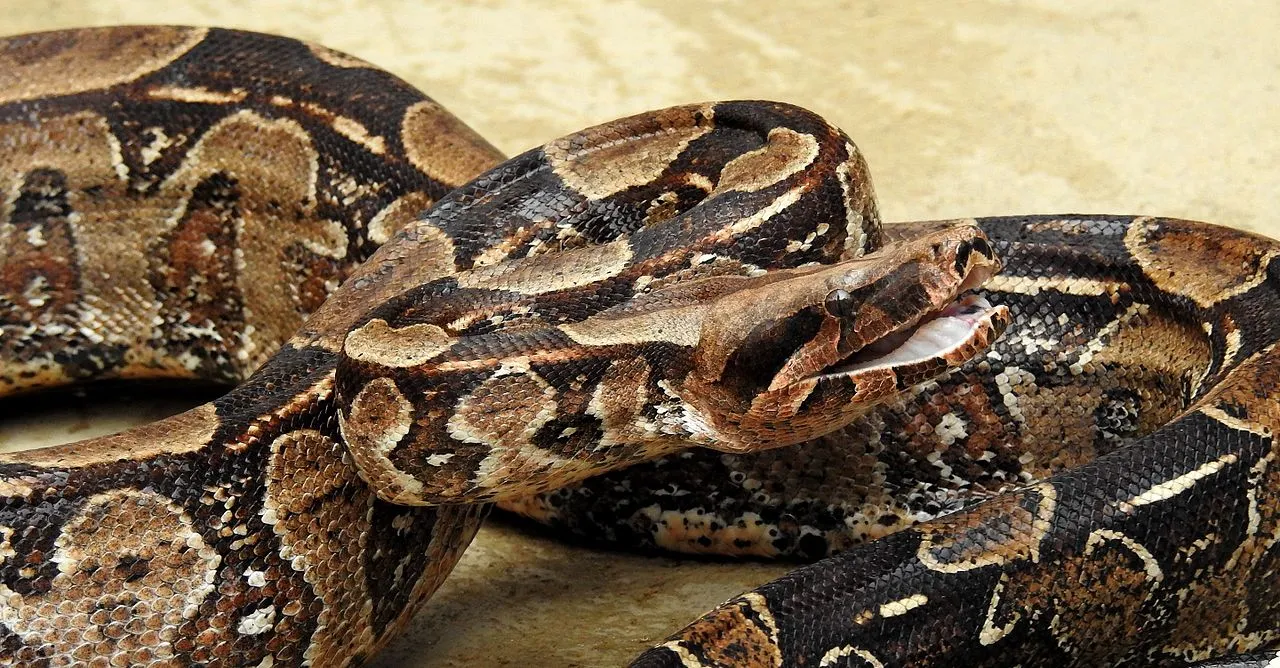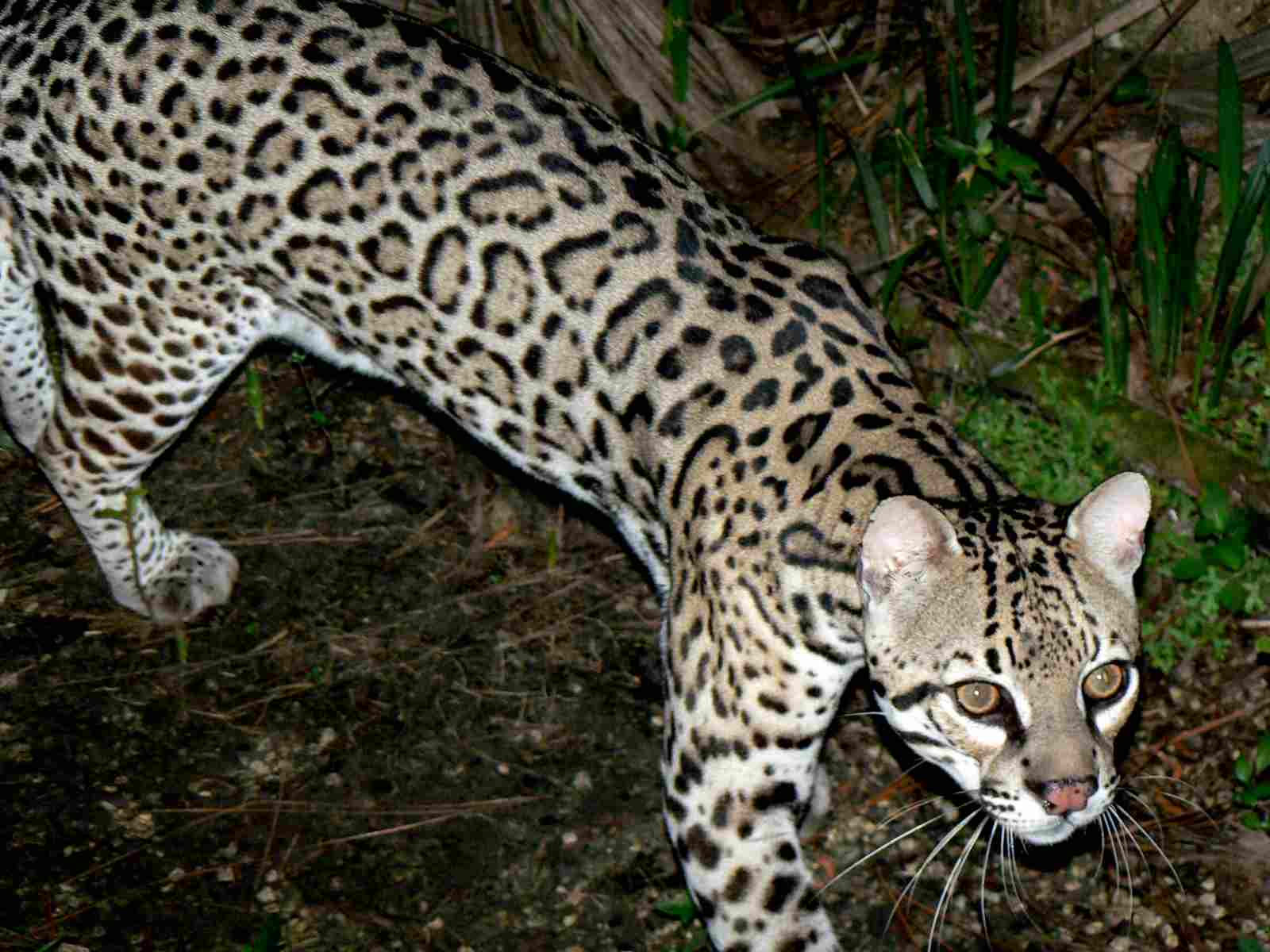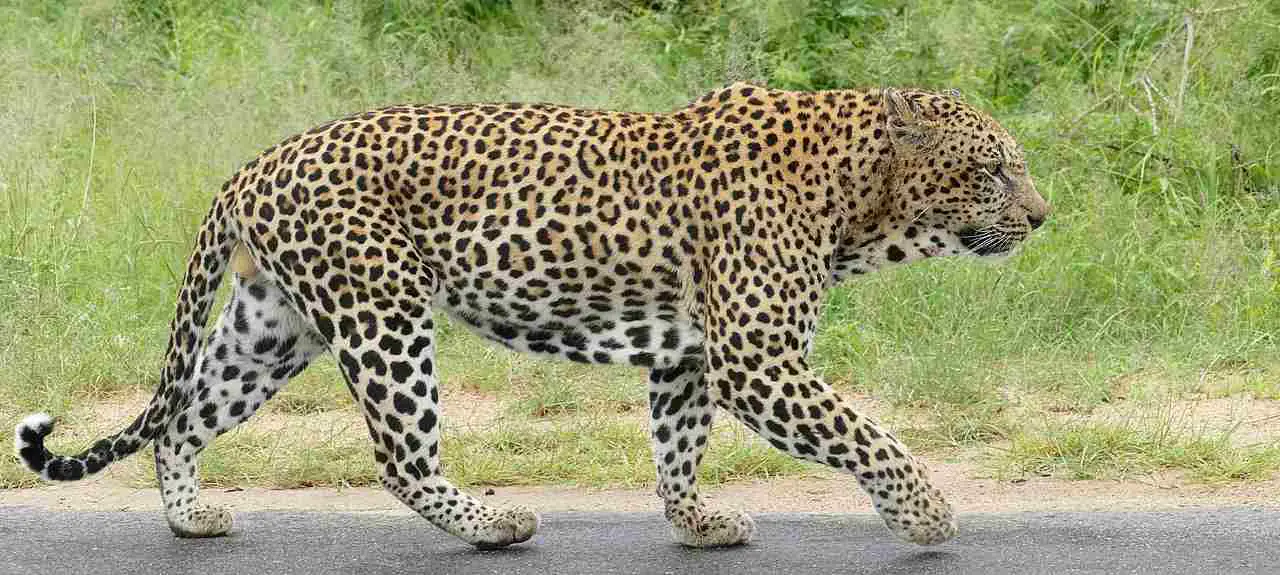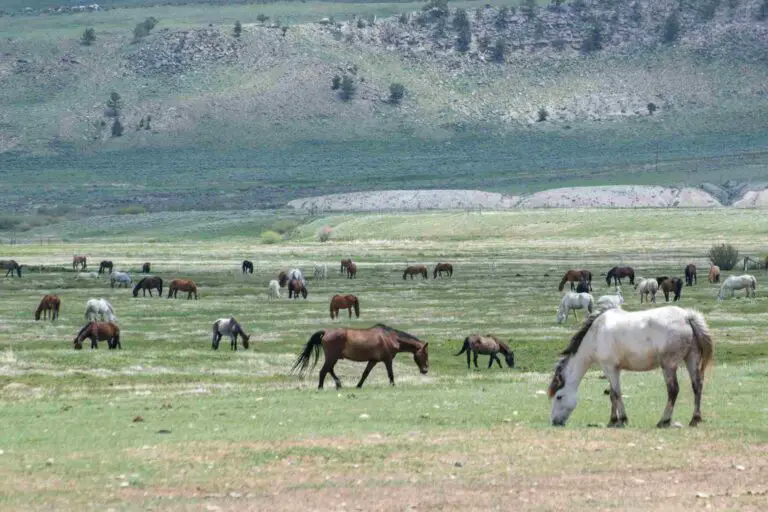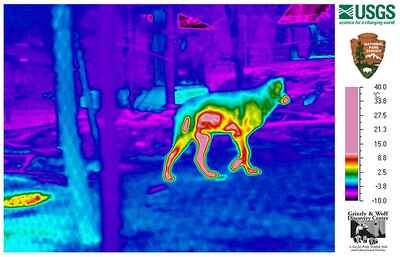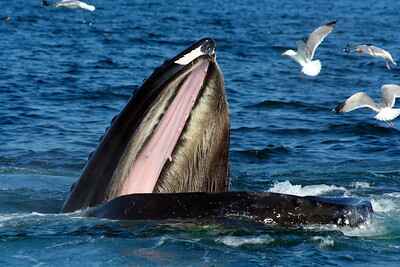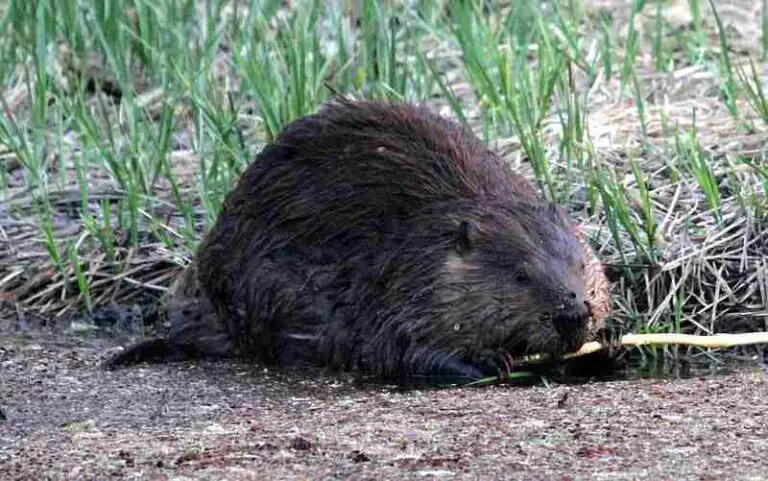7+ Tertiary Consumers in the Tropical Rainforest Discussed
Tertiary consumers in the tropical rainforest are crucial for maintaining ecological balance. Among them are the apex predators like the Philippine Eagle, River Otter, Amazon River Dolphin, and Caiman, which play vital roles in regulating prey populations and shaping the structure of their ecosystems. Additionally, large snakes such as the Python and Boa Constrictor act as top predators, controlling smaller mammal and reptile populations. Felines like the Leopard and Cougar complete the roster of tertiary consumers, ensuring the intricate balance of predator-prey dynamics in the tropical rainforest ecosystem.
1. Philippine Eagle
Description:
The Philippine Eagle (Pithecophaga jefferyi), also known as the Monkey-eating Eagle, is one of the largest and most powerful birds of prey in the world. It is endemic to the Philippines and is primarily found in the dense tropical rainforests of Mindanao, Luzon, Leyte, and Samar islands.
Physical Characteristics:
-
The Philippine Eagle is characterized by its striking appearance, with a dark brown plumage and a prominent, shaggy crest of feathers on its head.
-
It has a massive, hooked beak, which is adapted for tearing through flesh and crushing bones.
-
With a wingspan of up to 7 feet (2.1 meters) and a length of around 3 feet (1 meter), it is one of the largest eagles globally.
-
Its legs are powerful and equipped with sharp talons, enabling it to capture and hold onto prey securely.
Diet and Feeding Habits:
-
As a tertiary consumer in the tropical rainforest ecosystem, the Philippine Eagle occupies the top of the food chain.
-
Its diet primarily consists of medium-sized mammals, such as monkeys, flying lemurs, and palm civets.
-
Additionally, it preys on other birds, including hornbills and large reptiles like snakes and monitor lizards.
-
Despite its name, the Philippine Eagle rarely targets monkeys and mainly feeds on a variety of prey, including snakes, reptiles, and even large insects when necessary.
Hunting and Feeding Behavior:
-
The Philippine Eagle is an apex predator, employing stealth and ambush tactics to capture its prey.
-
It often perches high in the forest canopy, scanning the surroundings for potential prey.
-
Once a target is spotted, it swoops down with incredible speed and precision, using its powerful talons to grasp the prey firmly.
-
With its strong beak, it quickly dispatches the prey by delivering a fatal blow to the head or neck.
-
The eagle then carries the prey back to its nest or a nearby feeding perch, where it tears it apart and consumes it.
Conservation Status:
-
The Philippine Eagle is listed as Critically Endangered by the International Union for Conservation of Nature (IUCN).
-
Habitat loss due to deforestation, logging, and mining is the primary threat to its survival.
-
Additionally, hunting and trapping, as well as the illegal pet trade, pose significant challenges to its conservation efforts.
-
Various conservation organizations and government agencies are actively involved in initiatives to protect the remaining populations and their habitats through measures such as habitat restoration, anti-poaching patrols, and public education campaigns.
2. River Otter
Description:
The River Otter (Lontra canadensis) is a semiaquatic mammal belonging to the Mustelidae family. It is found in various freshwater habitats, including rivers, streams, lakes, and wetlands, across North America, South America, and parts of Europe and Asia.
Physical Characteristics:
-
River otters have long, streamlined bodies with short legs and webbed feet, making them excellent swimmers.
-
They have dense, waterproof fur that insulates them from cold water temperatures.
-
Their fur coloration varies depending on the subspecies and habitat, ranging from dark brown to reddish-brown on the upperparts and lighter on the underparts.
-
River otters have long, muscular tails that help propel them through the water and steer while swimming.
Diet and Feeding Habits:
-
As tertiary consumers in freshwater ecosystems, river otters primarily feed on fish, crustaceans, amphibians, and aquatic invertebrates.
-
They are opportunistic predators and will also consume small mammals, birds, and even reptiles when available.
-
River otters use their keen sense of smell and underwater agility to hunt prey, often chasing fish into shallow waters or ambushing them from underwater burrows and vegetation.
Behavior:
-
River otters are highly social animals and are often observed in family groups, known as rafts, consisting of an adult breeding pair and their offspring.
-
They are primarily crepuscular or nocturnal, meaning they are most active during dawn, dusk, and nighttime hours.
-
River otters are playful animals, engaging in various behaviors such as sliding down muddy banks, wrestling with each other, and playing with objects found in their environment.
-
They communicate through vocalizations, including chirps, whistles, and growls, as well as through scent marking and body language.
Conservation Status:
-
The conservation status of river otters varies among different regions and subspecies.
-
While some populations are stable and thriving, others are threatened by habitat loss, pollution, water contamination, and human disturbance.
-
Conservation efforts include habitat restoration, pollution control measures, and the establishment of protected areas and wildlife corridors to safeguard river otter populations and their habitats.
3. Amazon River Dolphin
Description:
The Amazon River Dolphin (Inia geoffrensis), also known as the Pink River Dolphin or Boto, is a freshwater cetacean species native to the Amazon and Orinoco river basins in South America.
Physical Characteristics:
-
Amazon river dolphins are known for their distinctive pink coloration, which is more prominent in adults and fades in younger individuals.
-
They have a long, slender body with a small dorsal fin and flippers.
-
Their snouts are elongated and flexible, with sharp, conical teeth adapted for catching prey.
-
Amazon river dolphins have poor eyesight due to their murky freshwater habitat, relying instead on echolocation to navigate and locate prey.
Diet and Feeding Habits:
-
As tertiary consumers in freshwater ecosystems, Amazon river dolphins primarily feed on a variety of fish species found in their riverine habitats.
-
They are skilled hunters, using echolocation to detect the location and movements of prey in the turbid waters.
-
Amazon river dolphins also consume crustaceans, mollusks, and occasionally small mammals and birds when available.
Behavior:
-
Amazon river dolphins are highly social animals and are often observed in small groups or pods, typically consisting of females and their offspring.
-
They are known for their playful behavior, frequently engaging in activities such as breaching, spy-hopping, and playing with objects found in their environment.
-
Amazon river dolphins are adapted to life in freshwater habitats and can navigate through shallow, murky waters with ease.
-
They communicate through a variety of vocalizations, including clicks, whistles, and pulsed sounds, which are used for navigation, social interaction, and locating prey.
Conservation Status:
-
The Amazon River Dolphin is listed as Data Deficient by the International Union for Conservation of Nature (IUCN) due to limited data on population trends and threats.
-
However, they face various threats, including habitat degradation, pollution, illegal hunting, and accidental entanglement in fishing gear.
-
Conservation efforts include research to better understand population dynamics and threats, habitat protection measures, and community-based conservation initiatives aimed at promoting sustainable fishing practices and reducing human impacts on dolphin populations.
4. Caiman
Description:
Caimans are reptiles belonging to the Alligatoridae family, which also includes alligators and crocodiles. They are native to Central and South America and are found in various freshwater habitats, including rivers, lakes, swamps, and marshes.
Physical Characteristics:
-
Caimans have a similar appearance to crocodiles, with a broad, rounded snout and armored body covered in scales.
-
They have powerful jaws lined with sharp teeth, which they use for capturing and consuming prey.
-
Caimans range in size from small species, such as the Spectacled Caiman, which typically grows up to 5 feet (1.5 meters) in length, to larger species like the Black Caiman, which can exceed 13 feet (4 meters) in length.
Diet and Feeding Habits:
-
As tertiary consumers in freshwater ecosystems, caimans are apex predators, feeding on a variety of prey, including fish, amphibians, reptiles, birds, and mammals.
-
They are ambush predators, using stealth and patience to stalk and capture their prey.
-
Caimans often lie in wait near the water’s edge, concealed by vegetation or submerged in the water, before lunging at unsuspecting prey with lightning-fast strikes.
-
They use their powerful jaws to grasp and subdue prey, then swallow it whole or tear it into smaller pieces before consuming it.
Behavior:
-
Caimans are primarily nocturnal hunters, becoming more active during the nighttime hours when temperatures are cooler and prey are more abundant.
-
During the day, they bask in the sun to regulate their body temperature and conserve energy.
-
Caimans are territorial animals and will defend their territory from intruders, including other caimans and potential competitors.
Conservation Status:
-
The conservation status of caimans varies among different species and populations.
-
While some species, such as the Spectacled Caiman, are relatively common and widespread, others, like the Black Caiman, are threatened by habitat loss, hunting, and illegal trade.
-
Conservation efforts include habitat protection, captive breeding programs, and regulation of hunting and trade to ensure the sustainability of caiman populations and their ecosystems.
5. Python
Description:
Pythons are a group of large nonvenomous snakes belonging to the Pythonidae family. They are found in tropical and subtropical regions of Africa, Asia, and Australia. Some of the most well-known species include the Burmese python, reticulated python, and African rock python.
Physical Characteristics:
-
Pythons are characterized by their muscular bodies, flexible jaws, and heat-sensitive pits located along their upper lip, which help them detect prey.
-
They have a distinct pattern of scales, which varies in color and markings depending on the species and habitat.
-
Pythons are among the largest snakes in the world, with some species capable of reaching lengths exceeding 20 feet (6 meters) and weighing hundreds of pounds.
Diet and Feeding Habits:
-
As tertiary consumers in their ecosystems, pythons are apex predators, feeding on a wide range of prey, including mammals, birds, reptiles, and occasionally large amphibians.
-
They are ambush predators, lying in wait for prey to pass by before striking with lightning-fast speed and constricting their victims with their powerful coils.
-
Pythons use their sharp teeth and backward-curving spines to grasp and hold onto prey while wrapping their bodies around them in tight coils.
-
Once the prey is subdued, pythons suffocate it by constricting with increasing pressure each time the prey exhales, leading to death by asphyxiation.
Behavior:
-
Pythons are primarily solitary animals, only coming together during the breeding season or when sharing a common basking site or food source.
-
They are ectothermic, relying on external sources of heat to regulate their body temperature, and are often found basking in the sun to warm up.
-
Pythons are skilled climbers and swimmers, allowing them to access a wide range of habitats, including trees, water bodies, and underground burrows.
Conservation Status:
-
Many python species are facing threats from habitat loss, poaching for their skins and meat, and conflicts with humans.
-
Invasive species, such as the Burmese python in Florida, have also become a significant conservation concern due to their negative impact on native wildlife populations.
-
Conservation efforts include habitat protection, regulation of the exotic pet trade, and management strategies to control invasive python populations in affected regions.
6. Boa Constrictor
Description:
Boa constrictors are a group of nonvenomous snakes belonging to the Boidae family. They are found in various habitats across Central and South America, including tropical rainforests, savannas, and scrublands.
Physical Characteristics:
-
Boa constrictors have stout bodies with distinctive patterns of scales, which vary in coloration and markings depending on the species and habitat.
-
They have heat-sensitive pits located along their upper lip, which help them detect prey and navigate their environment.
-
Boa constrictors are sexually dimorphic, with females typically larger and heavier than males.
Diet and Feeding Habits:
-
As tertiary consumers in their ecosystems, boa constrictors are apex predators, feeding on a variety of prey, including mammals, birds, reptiles, and occasionally amphibians.
-
They are ambush predators, relying on stealth and patience to catch their prey by surprise.
-
Boa constrictors strike quickly and use their muscular bodies to constrict and suffocate their victims before swallowing them whole.
-
They are capable of consuming prey much larger than their own head size, thanks to their flexible jaws and stretchy skin.
Behavior:
-
Boa constrictors are primarily solitary animals, only coming together during the breeding season or when sharing a common basking site or food source.
-
They are ectothermic, relying on external sources of heat to regulate their body temperature, and are often found basking in the sun to warm up.
-
Boa constrictors are skilled climbers and can often be found resting in trees or shrubs, waiting for prey to pass by.
Conservation Status:
-
Many boa constrictor species face threats from habitat loss, poaching for their skins, and conflicts with humans.
-
Conservation efforts include habitat protection, regulation of the exotic pet trade, and research to better understand the ecology and behavior of these snakes to inform conservation strategies.
7. Leopard
Description:
The leopard (Panthera pardus) is a large and powerful carnivore belonging to the Felidae family. It is found across various habitats in sub-Saharan Africa and parts of Asia, including tropical rainforests, savannas, and mountainous regions.
Physical Characteristics:
-
Leopards have a sleek and muscular build, with a distinctive coat pattern of rosettes and spots, which provides excellent camouflage in their forest habitat.
-
They have a broad skull, powerful jaws, and sharp retractable claws, which they use for hunting and climbing.
-
Leopards exhibit sexual dimorphism, with males typically larger and heavier than females.
Diet and Feeding Habits:
-
As tertiary consumers in their ecosystems, leopards are apex predators, feeding on a wide range of prey, including ungulates such as deer, antelope, and wild boar, as well as smaller mammals, birds, and reptiles.
-
They are solitary hunters, using stealth and ambush tactics to catch their prey by surprise.
-
Leopards are capable of dragging prey weighing up to three times their body weight into trees to protect it from scavengers and other predators.
Behavior:
-
Leopards are primarily solitary animals, only coming together during the breeding season or when sharing a common food source, such as a large kill.
-
They are highly adaptable and can thrive in a variety of habitats, ranging from dense rainforests to arid scrublands.
-
Leopards are skilled climbers and are often observed resting in trees or dragging prey into elevated positions to avoid competition from other predators.
Conservation Status:
-
The conservation status of leopards varies among different populations and subspecies, with some facing threats from habitat loss, poaching, and human-wildlife conflict.
-
Conservation efforts include habitat protection, anti-poaching patrols, and community-based conservation initiatives aimed at promoting coexistence between leopards and local communities.
8. Cougar
Description:
The cougar (Puma concolor), also known as the mountain lion, puma, or panther, is a large felid found in various habitats across North and South America, including tropical rainforests, mountains, deserts, and grasslands.
Physical Characteristics:
-
Cougars have a sleek and muscular build, with a tan or tawny coat and a whitish underside.
-
They have a broad head, powerful jaws, and sharp retractable claws, which they use for hunting and climbing.
-
Cougars exhibit sexual dimorphism, with males typically larger and heavier than females.
Diet and Feeding Habits:
-
As tertiary consumers in their ecosystems, cougars are apex predators, feeding on a wide range of prey, including deer, elk, moose, and smaller mammals such as rabbits and rodents.
-
They are solitary hunters, using stealth and ambush tactics to catch their prey by surprise.
-
Cougars are capable of leaping great distances and climbing trees to ambush prey or escape from other predators.
*Summary
1. Philippine Eagle:
Description:
Large and powerful bird of prey endemic to the Philippines.
Dark brown plumage with a shaggy crest.
Physical Characteristics:
Wingspan up to 7 feet and length around 3 feet.
Massive hooked beak and powerful talons.
Diet and Feeding Habits:
Feeds on medium-sized mammals, birds, reptiles, and large insects.
Hunts using ambush tactics and powerful strikes.
Conservation Status:
Critically Endangered due to habitat loss and hunting.
2. River Otter:
Description:
Semiaquatic mammal found in freshwater habitats across North and South America.
Physical Characteristics:
Long, streamlined body with webbed feet.
Dense, waterproof fur for insulation.
Diet and Feeding Habits:
Feeds on fish, crustaceans, amphibians, and small mammals.
Opportunistic predator using keen senses for hunting.
Conservation Status:
Threatened by habitat loss and pollution.
3. Amazon River Dolphin:
Description:
Freshwater cetacean found in the Amazon and Orinoco river basins.
Physical Characteristics:
Distinctive pink coloration and elongated snout.
Uses echolocation for navigation and hunting.
Diet and Feeding Habits:
Feeds on fish, crustaceans, and occasionally small mammals and birds.
Skilled hunter using echolocation to detect prey.
Conservation Status:
Data Deficient, facing threats from habitat degradation and pollution.
4. Caiman:
Description:
Reptile belonging to the Alligatoridae family found in Central and South America.
Physical Characteristics:
Broad, rounded snout and armored body.
Powerful jaws lined with sharp teeth.
Diet and Feeding Habits:
Feeds on fish, amphibians, reptiles, birds, and mammals.
Ambush predator using stealth and patience to catch prey.
Conservation Status:
Threatened by habitat loss and hunting.
5. Python:
Description:
Large nonvenomous snake found in tropical regions of Africa, Asia, and Australia.
Physical Characteristics:
Muscular body with distinctive scale patterns.
Heat-sensitive pits for detecting prey.
Diet and Feeding Habits:
Feeds on mammals, birds, reptiles, and amphibians.
Ambush predator using constriction to subdue prey.
Conservation Status:
Facing threats from habitat loss and poaching.
6. Boa Constrictor:
Description:
Nonvenomous snake found in Central and South America.
Physical Characteristics:
Stout body with distinctive scale patterns.
Heat-sensitive pits for detecting prey.
Diet and Feeding Habits:
Feeds on mammals, birds, reptiles, and amphibians.
Ambush predator using constriction to subdue prey.
Conservation Status:
Facing threats from habitat loss and poaching.
7. Leopard:
Description:
Large felid found in sub-Saharan Africa and parts of Asia.
Physical Characteristics:
Sleek body with rosettes and spots for camouflage.
Broad head and powerful jaws.
Diet and Feeding Habits:
Feeds on ungulates, small mammals, birds, and reptiles.
Solitary hunter using stealth and ambush tactics.
Conservation Status:
Threatened by habitat loss and poaching.
8. Cougar:
Description:
Large felid found in North and South America.
Physical Characteristics:
Sleek body with tan coat and white underside.
Broad head and powerful jaws.
Diet and Feeding Habits:
Feeds on deer, elk, small mammals, and birds.
Solitary hunter using stealth and ambush tactics.
Conservation Status:
Threatened by habitat loss and human-wildlife conflict.
| Tertiary Consumer | Summary |
| Philippine Eagle |
– Large bird of prey endemic to the Philippines. – Feeds on medium-sized mammals, birds, reptiles, and large insects. – Critically Endangered species.
|
| River Otter |
– Semiaquatic mammal found in freshwater habitats across the Americas. – Feeds on fish, crustaceans, amphibians, and small mammals.
|
| Amazon River Dolphin |
– Freshwater cetacean found in the Amazon and Orinoco river basins. – Feeds on fish, crustaceans, and small mammals.
|
| Caiman |
– Reptile found in Central and South America. – Feeds on fish, amphibians, reptiles, birds, and mammals.
|
| Python |
– Large nonvenomous snake found in tropical regions. – Feeds on mammals, birds, reptiles, and amphibians.
|
| Boa Constrictor |
– Nonvenomous snake found in Central and South America. – Feeds on mammals, birds, reptiles, and amphibians.
|
| Leopard |
– Large felid found in sub-Saharan Africa and Asia. – Feeds on ungulates, small mammals, birds, and reptiles.
|
| Cougar |
– Large felid found in the Americas. – Feeds on deer, elk, small mammals, and birds.
|
Related FAQs
-
Why are Philippine Eagles endangered?
-
Philippine Eagles are endangered primarily due to habitat loss caused by deforestation, logging, and mining activities. They are also threatened by hunting and trapping, as well as the illegal pet trade.
-
-
How do River Otters hunt for prey?
-
River Otters are skilled hunters that primarily hunt fish, crustaceans, and amphibians. They use their keen sense of smell and underwater agility to locate prey, often chasing fish into shallow waters or ambushing them from underwater burrows and vegetation.
-
-
What are the main threats to Amazon River Dolphins?
-
The main threats to Amazon River Dolphins include habitat degradation due to deforestation and pollution, illegal hunting and fishing, and accidental entanglement in fishing gear.
-
-
Why are Caimans important to their ecosystems?
-
Caimans play a crucial role in their ecosystems as top predators, helping regulate prey populations and maintain ecological balance. They also serve as indicators of ecosystem health and contribute to nutrient cycling through their feeding habits.
-
-
How do Pythons kill their prey?
-
Pythons are ambush predators that kill their prey by constriction. After striking and grasping their prey with their sharp teeth, they coil their muscular bodies around the prey and tighten their grip with each exhale until the prey suffocates.
-
-
What is the difference between a Leopard and a Cougar?
-
Leopards are large felids found in Africa and Asia, while Cougars are found in the Americas. Leopards have a distinctive coat pattern of rosettes and spots, while Cougars have a tan coat with a white underside.
-
-
Are Boa Constrictors dangerous to humans?
-
While Boa Constrictors are nonvenomous and generally not considered dangerous to humans, they can inflict serious injuries through constriction. However, attacks on humans are rare and usually occur when the snake feels threatened or cornered.
-
-
How do conservation efforts help protect these animals?
-
Conservation efforts for these animals focus on habitat protection, anti-poaching measures, public education, and research initiatives. By addressing threats such as habitat loss, poaching, and human-wildlife conflict, conservation efforts aim to ensure the survival of these species and their ecosystems.
-
